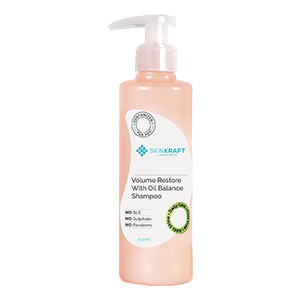From deep burgundy to rich auburn, chocolate brown to champagne - you have umpteen number of fancy hair color options today! In fact, you no longer have to think twice before getting your hair dyed to lavender, sea blue or even pink, right? After all, everyone around you is flaunting hip shades.
But, wait! Do you take some time out to check the ingredients in your hair color before making a purchase? Does the word 'ammonia' cause a warning bell in your ears when you’re looking for hair dyes? If you often wonder whether you should buy ammonia-free hair colors, let us clear all that confusion for you.
Highlights:
Why Is Ammonia Used In Hair Dyes?
Ammonia [1] is an alkali that is used to increase the pH level of your hair during the coloring process. It helps in opening up the cuticles (outer layer of your hair) [2] so that the dye or hair color is deposited on the cortex (the inner layer of your hair).
Simply put, ammonia is a swelling agent for the hair cuticle. Higher the absorption of hair color into the hair, better is the lasting capacity of your hair dye.
However, it comes with its ill effects. Dr. Zeel Gandhi, hair care expert at SkinKraft, says, “In the long run, ammonia damages your hair cortex and makes the hair rough and weak due to loss of tensile strength. It also triggers more greying as the cuticle is no longer fit enough to hold the melanin (your natural hair colour).”
The Dangerous Effects Of Ammonia In Hair Color
- When ammonia [3] is dissolved in water, it forms ammonium hydroxide, which is a potential skin irritant. When it comes in contact with the skin, it can cause skin burns, irritation to the nose and eyes.
- When ammonia dyes are used repeatedly, they tend to damage the cuticle, allowing the moisture to escape. This causes frizzy, dry and brittle hair.
- When ammonia is applied to the hair, there is a chance that it can enter the bloodstream through the scalp. The ammonia vapors that the salon professionals are exposed to, can cause lung problems, sinuses, throat infections and eye infections.
- The penetrated ammonia destroys an amino acid called tyrosine [4] in the hair. Tyrosine regulates the production of melanin (hair pigment), which helps hair hold onto color (new or old). When tyrosine is destroyed, your hair's ability to hold any color is compromised eventually.
- Ammonia can be harmful to the ecosystem too. It can damage crops, forests and can be dangerous for aquatic species when it is washed away into the ocean. Molecules of ammonia are tiny and evaporate quickly. This evaporation causes a pungent smell.
Do All Hair Dyes Have Ammonia?
In the past, ammonia dyes were the only option to darken your strands. But today, we have a number of ammonia-free hair colors.
While ammonia-based hair dyes can be long-lasting (hence called permanent hair dyes), ammonia-free hair colors are gentler on your hair and skin. If you have an extremely sensitive scalp, you may opt for organic hair colors.
Note:
Ammonia-free hair colors are not natural or organic. They are devoid of ammonia, but may contain other alkalis similar to ammonia.
What Do Ammonia-free Dyes Contain?
Ammonia-free hair colour uses monoethanolamine (MEA) [5] that contains alcohol. MEA is added in a less concentrated form and in combination with emollient oils to make it less damaging.
Cocamide MEA and aminomethyl propanol MEA are other forms of ammonia substitutes. Hair dyes containing such ingredients can be called permanent dyes containing no ammonia or demi-permanent hair color.
Ammonia-free hair dyes are sometimes called semi-permanent hair dyes. They do not open up the cuticle for long lasting results. Instead, they coat the outer layer of your hair strands with the dye.
Word of Caution
In a study, researchers found ethanolamine [6] more damaging when compared to ammonia. Consult your dermatologist or your hairstylist before you choose a hair dye.
|
SkinKraft Vocabulary |
||
|
Permanent hair colors |
Demi-permanent hair colors |
Semi-permanent hair colors |
|
Hair colors containing ammonia to open up hair cuticles for the dye to penetrate. |
Hair colors containing ammonia substitutes like ethanolamine to open up the hair cuticles. |
Hair colors that do not open up the hair cuticles but simple coat the hair strands with the dye. |
Advantages Of Ammonia-free Dye
- Do not cause scalp irritation and itchy scalp.
- Do not destroy your hair health as ammonia-free hair dyes do not damage the cuticle of your hair.
- No pungent smell and irritation to your senses.
- Since the melanin is not destroyed, hair is able to hold onto any color longer.
Wrapping Up
You no longer have to forego your wish of dyeing your hair with your favourite color. There are plenty of hair color or dye options that are ammonia-free, organic and gentle on your scalp. Follow a good hair care routine, regular hair spas and use shampoos and conditioners for your color-treated hair. Do consult your doctor, in case you have any scalp conditions, before applying hair dyes.
Recommended Products
Was this Article helpful?
- Least helpful
- Most helpful











